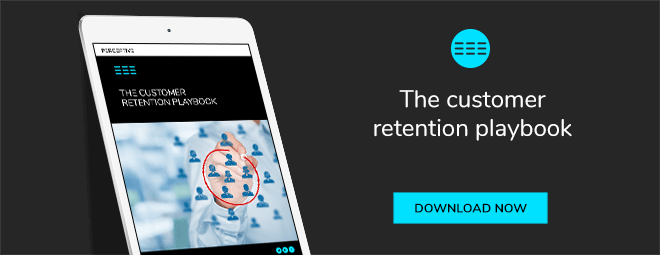New business is the food of a growing company; but your customer retention rate is oxygen. You can live a little while without new business, but you'll quickly suffocate without oxygen.If you want to grow, improve and ultimately retain your current customer relationship, you need to follow these five important techniques.
1. First impressions count
Everything from clothing to posture to the firmness of your handshake can affect how people perceive you. The same can be said for your business.
The way you present your brand on your website, on social media, in the news and, of course, in person, all determines how people view you. Would you want to work with a company that had the commercial equivalent of a limp handshake? Would you be likely to come back after the first purchase?
Take another look at your branding, from your colour schemes to your office decor, right through to the style of writing you use:
- Does it exude confidence, or is every statement sort of, maybe, kind of couched?
- Are you coming across as authoritative in your writing, or merely fluffy?
- When was the website last refreshed? Is it starting to look dated?
People care about this kind of imagery, even after the first impressions are made. The modern consumer isn't afraid of change; they embrace it. You should too.
Related content: 3 big customer retention mistakes—are you making them?
Related content: The Customer Retention Playbook
2. Exceed expectations
Exceeding expectations can be as easy as a follow-up call after a bad experience, or as complex as providing an entire suite of educational resources for one of your products (see HubSpot's marketing academy). Either option is capable of turning a customer's experience around, or boosting it to the next level.
There's a whole world of choice out there for your business: try something new.
Depending on your industry and your business size, the method you use will differ, but here is a good rule of thumb: what simple, additional action could you take to let your customers know that you care about their loyalty beyond the end of the transaction? There's a whole world of choice out there for your business: try something new.
Just as important as meeting and exceeding expectations, however, is setting them in the first place. This can often be a point of friction between your sales team and the rest of your staff, as it is easy for salespeople to accidentally over-promise on what your business is capable of. In general, it is better to underpromise and overdeliver than vice versa; communicate this to your team to ensure that you aren't creating pie-in-the-sky dreams for your customers and clients.
Related content: Top 3 unassuming customer retention tactics you can use instantly
3. Don't wait to resolve issues
Customers know what they want and they know when they want it: now. Failing to resolve issues quickly after a customer has complained can make your customer churn suffer.
Almost half of all consumers give a brand about a week to action a complaint before they stop doing business with them altogether, but make no mistake: that doesn't mean you have a week to fix someone's problems. That is just the absolute cut-off date.
By the second or third day, the damage has already been done, and that customer who may have been a promoter before is now firmly in the detractor camp. Don't wait to resolve issues; fix them immediately, preferably within 48 hours, or at the very least ensure your customer experience team is communicating regularly with the stakeholder.
Related content: The painful results of ignoring customer retention strategies
4. Benchmark against your competitors
Are you providing a customer experience that is superior to your competitors? How do you know; do you have the data to back that up? Surveys, net promoter scores, customer feedback are just the beginning. You have to know how you stack up against the competition as well.
Are you providing a customer experience that is superior to your competitors?
By knowing your strengths, you can capitalise on those parts of your strategy that are positive points of difference within your industry—and know in what areas you are falling behind. Remember, the customer experience is just as important (some would argue more important) than the services and products you are offering. Improve the experience, and retain the customers who might otherwise defect to your competitors.
Related content: NPS benchmarks for New Zealand and Australia
5. Focus on your at risk customers
It can be tempting to simply write off your most-at-risk customers (MARCs) as bad sales, forget about them and move on with your strategy. But the reality is that a once-loyal customer turning into a detractor due to a poor customer retention strategy is an easy way to lose more than just a single lead—you can lose potential customers you didn't even know you had.
Repeat customers will spend, on average, 67 per cent more than new customers, so it pays to keep customers coming back. On average, a customer who has a bad experience with your company will tell up to 16 other people about that poor experience.
By turning that one customer into a detractor, you aren't just missing out on their repeat business, but also the potential for repeat business from each and every single one of those 16 people they tell. Word-of-mouth can be a powerful marketing tool—or your worst enemy.
Related content: Struggling with customer retention? Make sure you're using this pair of methods
If you want to learn more about customer retention strategies, check out our free eBook below:

